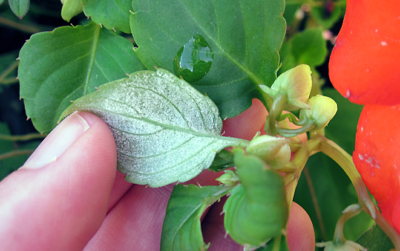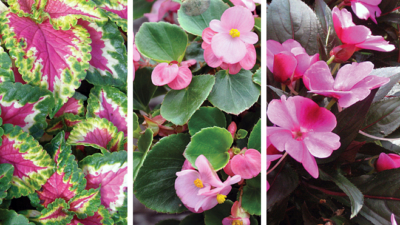African violets are one of the world’s most popular house plants. An African violet has velvety leaves and comes in a wide range of colors, making it a sure candidate to add a simple splash of color to any room. These house plants also happen to be fairly easy to care for.
WATERING
The single most effective way to water an African violet is from the bottom. Watering from the bottom, or sub-irrigation, allows for thorough saturation and can be accomplished by placing the container in a pan filled with about one inch of room-temperature water. Leave the plant in the water until the surface soil is damp. Always make sure to keep the leaves dry and not to leave it sitting in the water for an excessive amount of time, which could cause root rot.
SELF-WATERING POTS
One common way of cultivating an African violet in the home is in a self-watering pot. These typically consist of a ceramic or plastic outer pot and an insert with holes in the bottom to allow water to soak into the soil and root system of the plant. Watering is recommended approximately every ten days by removing the insert and replacing the water in the bottom of the pot. Some varieties of these pots may have a watering hole on the side, eliminating the need to remove the insert.
SOIL
There are soils available specifically for African violets, but it is also possible to make your own. A mixture of ⅓ ordinary potting soil, ⅓ peat moss and ⅓ vermiculite or perlite will work perfectly.

FERTILIZATION
Fertilization of African violets should occur every three to four weeks, but it is recommended to follow the directions of the fertilizer purchased. A loss of green leaf color along with a reduced growth rate could indicate a need for more fertilizer. One recommended African violet fertilization product is Schultz African Violet Plus, with an analysis of 8-14-9.
PRUNING
Regularly pruning African violets is also recommended to promote healthy growth. Roughly three or more bottom leaves should be gently removed about once every month. This can be done by bending the leaves to the side, forcing them to snap, leaving no stub toward the base of the plant. Pruning, along with removing spent flowers, will encourage healthy growth.
LIGHTING
African violets have simple lighting requirements. They do not need direct sunlight and will flourish just fine with 8-10 hours of artificial lighting per day. For best growing conditions, they should be placed in a warm area (65-70 degrees on average).
